Honeybees are powerful pollinators. But they’re not the only ones! Mason bees are solitary but efficient pollinators of fruit trees and native crops. Let’s learn more about them and how to build a mason bee house.
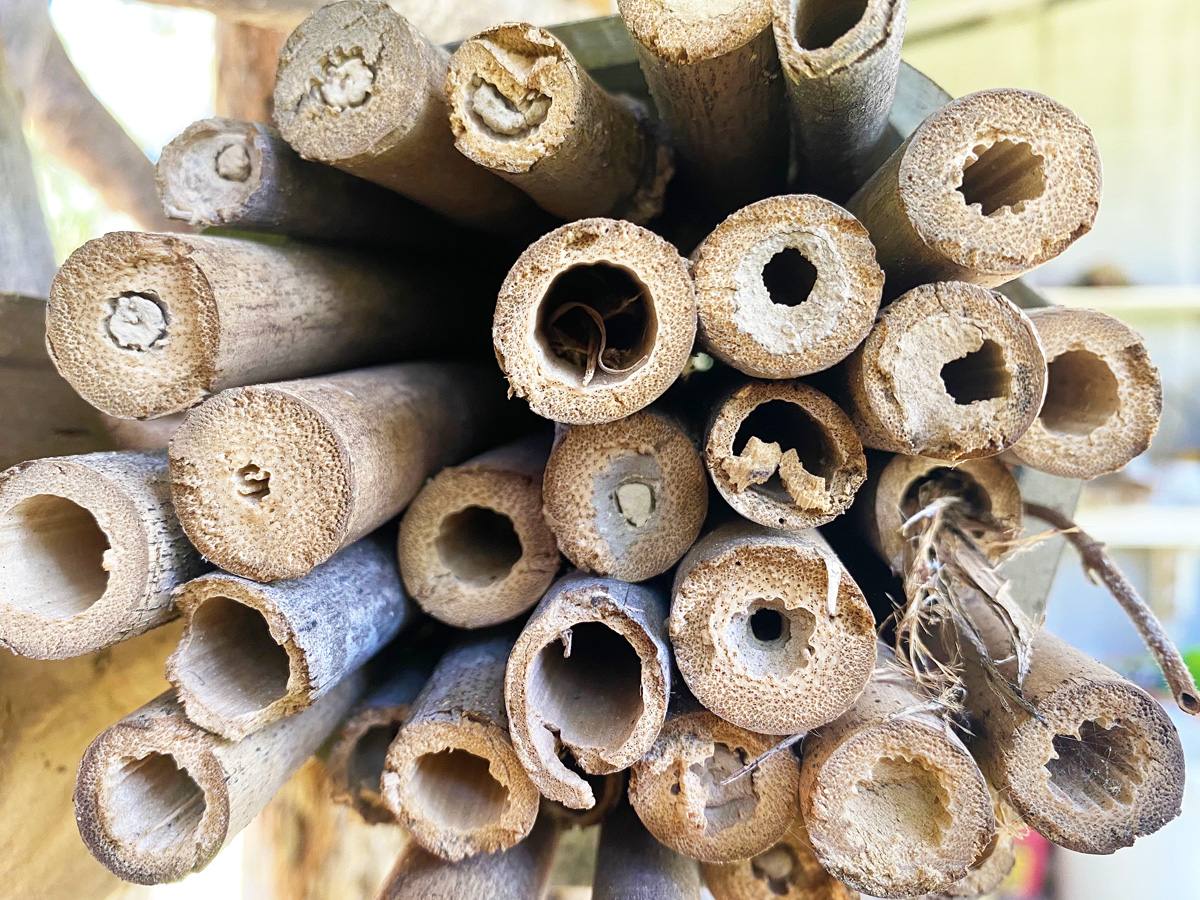
This post may contain affiliate links, which means if you make a purchase through the link, I may make a commission at no cost to you. See my Affiliate Disclosure Policy for more information.
Do you ever feel overlooked?
I think we’ve all experienced it. Maybe in school or in a club meeting — anytime we’ve been part of a committee or group setting: We put in the work, we organize, we cook, we do the research. We’re an integral part of the team, dang it! And yet (you know what’s coming) it’s always that other person that gets the attention. The louder, showier one gets all the credit while we, in the background, quietly continue the business of getting things done.
Now, to be fair, the SHOWY ONE is also doing their fair share of the work. They’re contributing just as much to the project, but still it’s hard to see them get so much attention. It’s easy to feel overlooked.

I wonder if the same is true in the world of bees? Bees are fantastic workers — all of them. Can you believe there are over 20,000 varieties of bees? All of them excel at the job of pollination, but the one who gets all the attention, the SHOWY ONE, is the honey bee. No offense, Honey Bee, you’re doing a great job, but it’s time to shine a light on one of the other committee members: the often overlooked mason bee (aka orchard bee).
Honeybees are very important to commercial agriculture, but native bees like the blue orchard bees are better and more efficient pollinators of native crops. There are 140 species of Osmia in North America. They are all known for visiting fruit trees, such as apples, plums, pears, almonds, and peaches. US Forest Service
These little bees are called “masons” for their habit of using mud, pebbles and chewed leaves to build their nests. They’re typically loners, not living in colonies but rather setting up house in abandoned shells, hollow stems, holes in rocks, etc. I find that quality very endearing (they start where they are and use what they have!)
Mason, or orchard bees, emerge in early spring in time to pollinate fruit trees and other spring blooming plants. They live for only about 1 month and in that time find a cozy spot to lay their eggs. The eggs hatch, turn to larvae then pupate and by late summer are fully adult bees. They spend the entire winter in the nest, emerging in early spring to complete the cycle.
Since they’re such great little friends and helpers we should encourage them to set up house in our yards. Knowing their penchant for narrow, hollow spaces, we can craft a simple mason bee house using an unlikely ingredient: embroidery hoops!
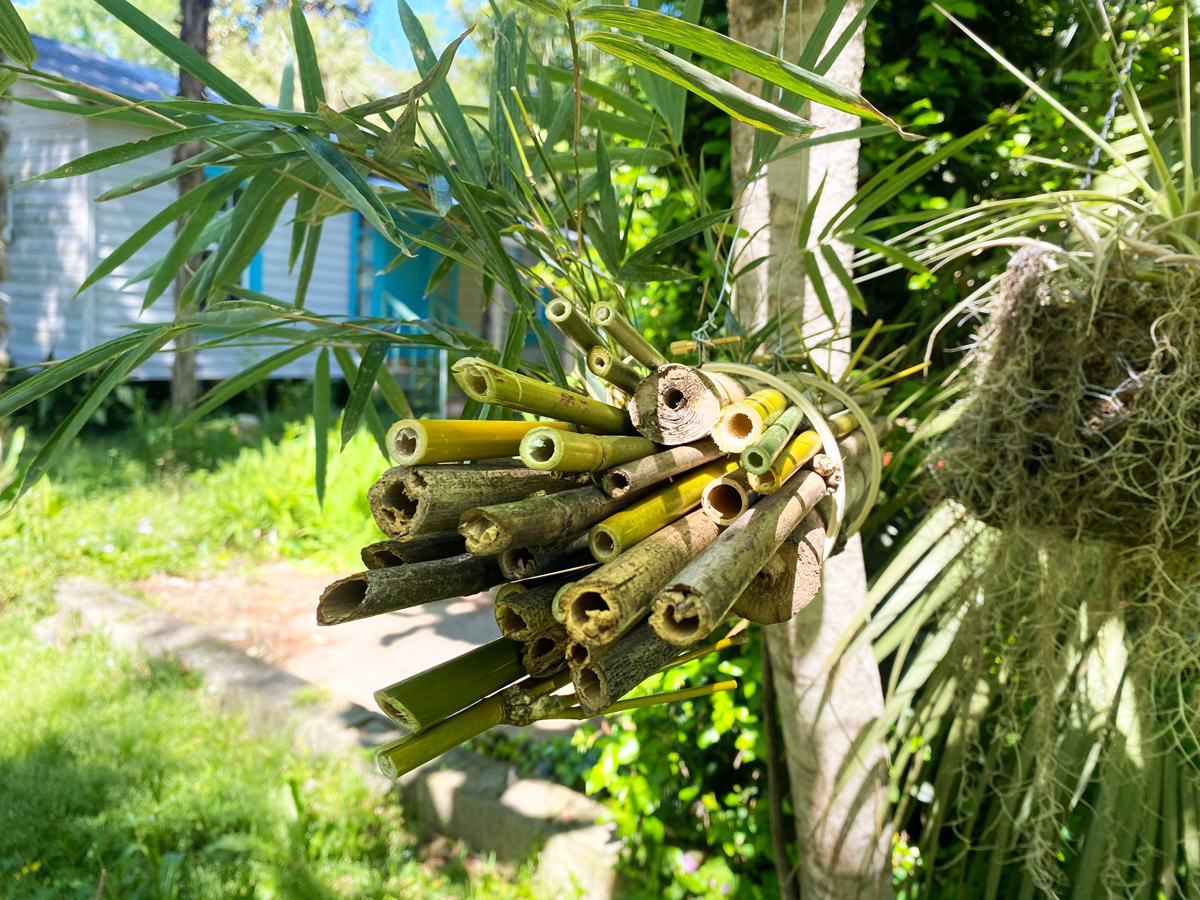
how to build a simple mason bee house
You’ll need:
2 – 4″ embroidery hoops (plastic or bamboo)
plant clippers
hollow reeds or plant stems, paper straws, bamboo and/or CPVC pipe cut in approximately 12″ sections
wire to hang finished bee house
Directions:
Separate the inner and outer rings of the embroidery hoops (we’ll only be using the outer rings).
Collect plant stems or bamboo sections. The middle hollow section should be 1/4-3/8″ in diameter and at least 6″ deep. It saves time later if you cut them all relatively the same length as you go.
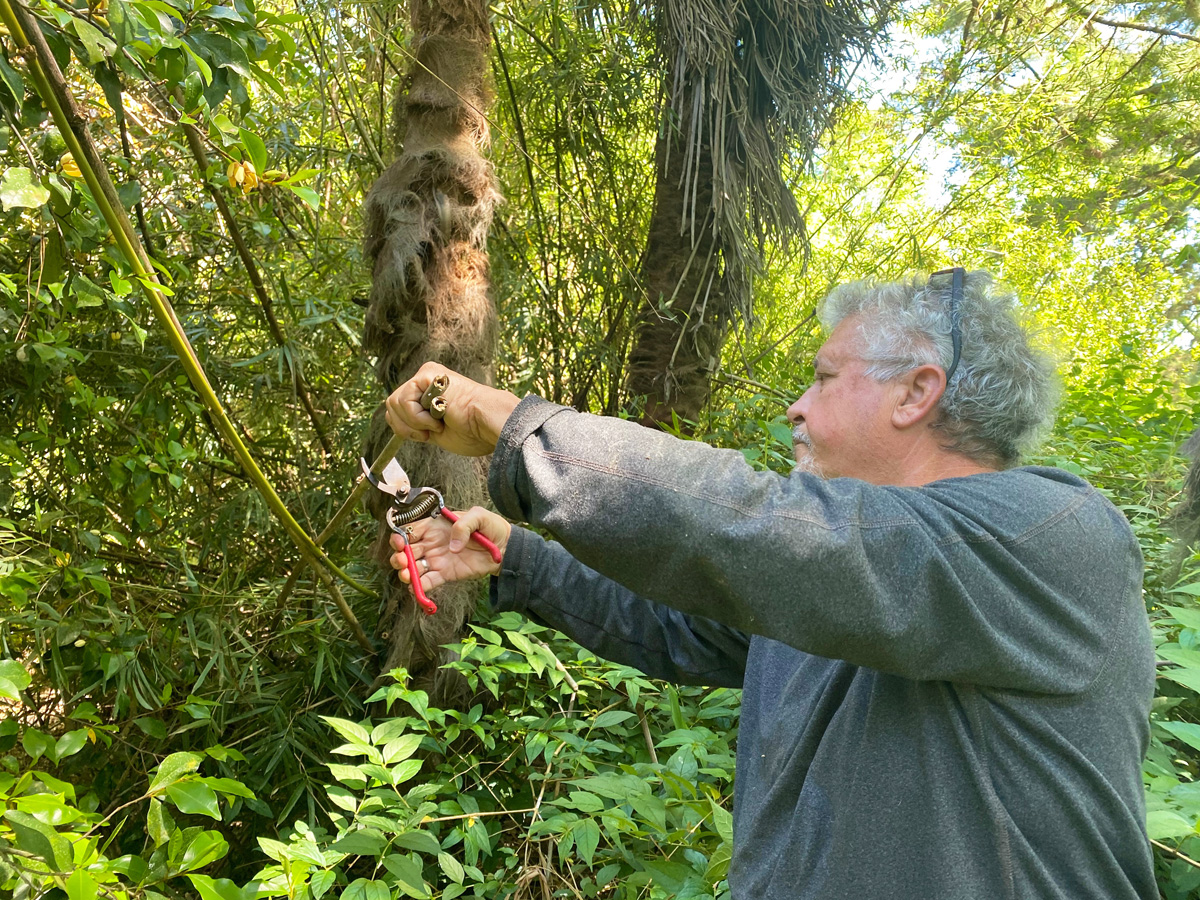
Loosen the screws on the embroidery hoops. Feed plant sections into the rings until they’re packed fairly tight.
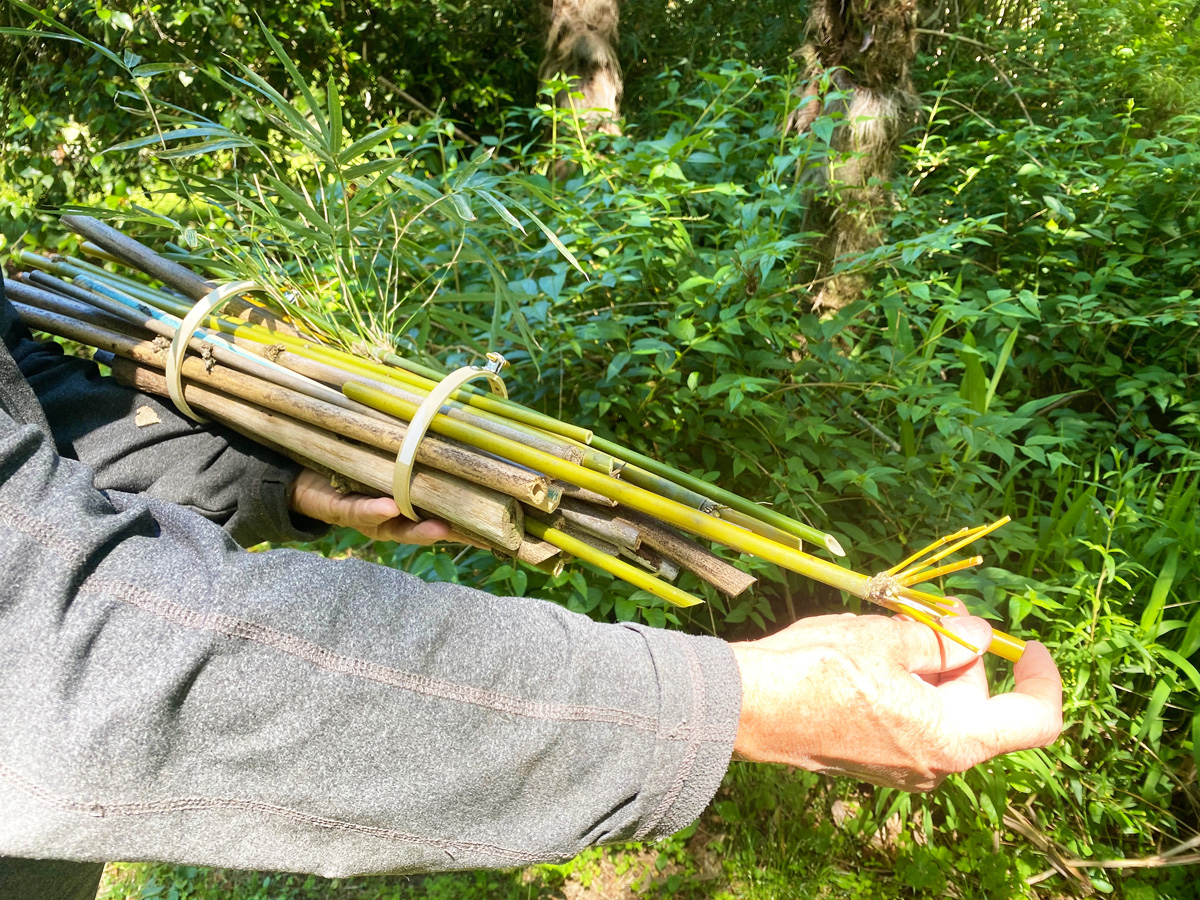
When the hoops are full, tighten the screws to lock the branches, etc in place. We left the bamboo leaves in place because we like they way they look. Once they’ve dried we’ll clip them off.

Cut a piece of galvanized wire approximately 30″ long. Loop one end of the wire around the embroidery hoop screw and tighten. Repeat on the other side.
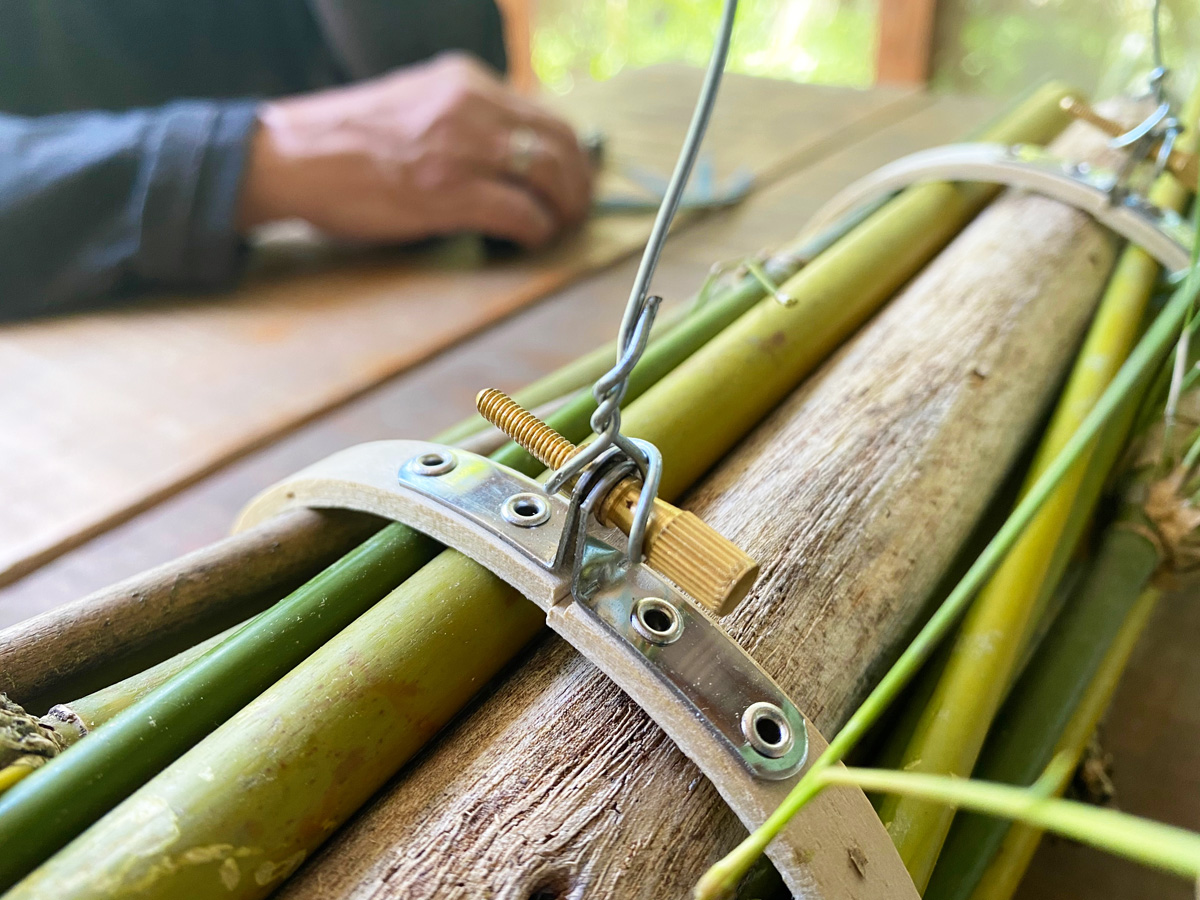
Hang the finished mason bee house under an eave or in another protected area. It needs to be protected from rain and high winds.

Here’s another super low key mason bee house that David made with our grandson. They just wrapped various plant stems with duct tape and called it done! You can see that some of the tubes are plugged with mud — a sign that they’re in use!
